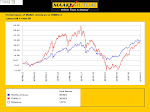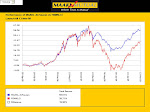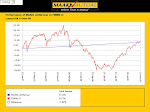Bursa may see 10% correction
KUALA LUMPUR: The local stock market can expect a 10% correction in the first half-year amid concern that global economic growth is faltering, said Great Eastern Life Assurance (M) Bhd chief investment officer Richard Lin.
Lin said 2010 would be a challenging year for the stock market.
“For first quarter, the market is expected to be volatile,” he said at a luncheon meeting on Saturday.
“It is all a confidence issue now but you will see a single-digit positive performance, if any, this year,” he said.
On Friday, share prices on Bursa Malaysia ended the week lower, with the key barometer falling to its lowest point since Nov 4 last year.
It was dragged down by losses in heavyweights, with sentiment affected by sharp losses on Wall Street and regional bourses.
For the week just ended, the FTSE Bursa Malaysia Kuala Lumpur Composite Index dropped 11.2 points to 1,247.9 from 1,259.16.
Lin said the expected correction should not cause too much concern as it would provide an opportunity for investors.
“Investors remain cautious over China’s monetary tightening and escalating sovereign issue,” he said.
“Although the United States, with mixed economic data, is not a prime factor, it provides secondary nervousness as its corporate sector is measuring up to expectation.”
Lin said for China, monetary tightening was considered necessary.
“As for its long term, China needs to pull back some of this bubble. However, they are not attacking the whole economy,” he said.
He added that China was only attacking certain sectors and this was a good strategy for long-term growth.
“But this is not a new crisis for China’s economy. We consider this a technical correction.”
According to Lin, the Asian market can expect to be stable if China is able to implement a good policy.
“When all these problems are resolved, you will see confidence in the market,” he said. — Bernama
DISCLAIMER:- This email is confidential and intended only for the use of the individual or entity named above and may contain information that is privileged. If you are not the intended recipient, you are notified that any dissemination, distribution or copying of this email is strictly prohibited. If you have received this email in error, please notify us immediately by return email or telephone and destroy the original message. Thank you.
















